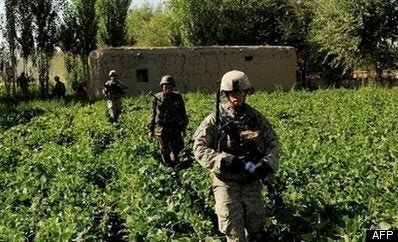
New research indicates that 80% of Afghanistan now has a permanent Taliban presence and that 97% of the country has "substantial Taliban activity."
The International Council on Security and Development (ICOS) has followed the movement of the Taliban throughout Afghanistan since 2007, by tracking third party public daily reports of incidents that indicate Taliban presence. Presence is defined by: "(An) average of one (or more) insurgent attacks (lethal and non-lethal) per week."
Even with this new data outlining a 97% presence, ICOS President Ms. Norine McDonald QC told the Huffington Post that she believes that figure is "conservative".
"It's bad numbers and bad news," says MacDonald. "They (the Taliban) have the momentum, their strategies and tactics are working, and ours are not. ... it's not a question of where they are operating, it's more a question of where they are not."
Combined with instability and uncertainty after the August 20 elections, allegations of wide scale electoral fraud and an alarming increase in violence and deaths, the new research further emphasizes the deterioration in Afghanistan.
Historically the north of Afghanistan has enjoyed a relative stability and little insurgent activity. The new ICOS data shows that the northern provinces of Kunduz and Balkh are "heavily affected by Taliban violence" and across the entire north there has been a dramatic increase in insurgent attacks.
MacDonald says that the increasing Taliban presence in the north is alarming and without "simple explanation" although a combination of factors, such as potential access to American supply chains, relatively good roads and a less dynamic NATO presence, could be contributing factors.
When ICOS has released their "presence reports" in the past, they have been dismissed by NATO and international diplomats. However, given the lack of any other published material, ICOS research is the only available indicator for the public to rely on. "There are no official public NATO, UN or Afghan government maps that reflect the situation," says MacDonald. "If they have maps they are not making them public. Nor (are they) refuting our methodology with another one that they suggest is a more credible way of judging the situation."
Top US Commander in Afghanistan, General Stanley McChrystal, is thought to be lobbying heavily for more combat troops. The Chairman of the Armed Services Committee, influential Democrat Carl Levin said Thursday he would not support sending more combat troops to Afghanistan unless there were steep improvements in the training and capabilities of Afghanistan's own army and police.